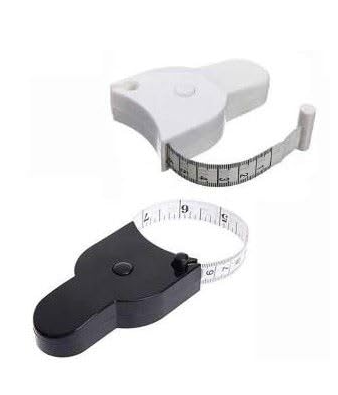I have been doing keto for one month now. Breath keto measurements are usually around 25 with few random peaks. Regarding weight, I have been checking using a new Tanita model that can do a full body scan and I am noticing that I have been losing muscle mass and gaining fat.
Can someone please suggest me how to fix this? If you think you need more informations feel free to ask me questions.
Losing muscle mass, fat percentage increases, yet on ketosis. Need advice
Do not trust this, they’re not accurate at all. Make sure you’re getting enough calories and protein for your body, carbs minimal, fats as required, and use a simple tape measure to judge your progress, no scale, no unreliable bioimpedance. Generally a basic waist measurement, first thing in the morning before any food or drink, is the only guide you need.
As long as you’re getting enough fuel from fats and building blocks from protein, ideally including some sort of resistance training to promote muscle gain (which EVERYONE needs for basic health), you’ll be good.
If you truly lose muscle mass, you eat too little protein or way too few calories. Or don’t exercise at the right level for your muscles to stay but you probably would be aware if you were very active, focusing on muscle strength and then just stopped.
There are many people who undereat on keto, even in the beginning if they just follow their hunger. I really would take a good look at your diet.
I don’t know anything about Tanita but don’t you notice changes, do you have some normally just right clothes you can check, many, maybe most of us gain to our bellies first and even a little change is apparent wearing fitting pants.
Thank you for your advice on getting enough calories and protein. I have a question. Why do you suggest not to trust any digital measurement?
Thank you very much for your advice as well. In particularly the “undereat” advice. I will keep a close eye on that as well.
Bioimpedance scales are greatly affected by such factors as whether or not you are properly hydrated. Under- or over-hydration will throw them off. They are a rough guide, not a precision tool.
The most accurate means of measuring body fat percentage is by a trained technician with calipers, but the training is rigorous and the technician has to be very careful, if the results are to be reliable. Even a DEXA (dual x-ray absorptiometry) scan, which is generally pretty reliable, is affected by hydration level, among other factors.
Another factor to bear in mind is your sex. Women’s hormones sometimes take a while to re-regulate themselves on a keto diet, and that can delay the onset of fat loss. And be sure to eat enough food; trying to cut calories is counter-productive on a keto diet.
So keep calm, and keto on. As suggested, make your body measurements (or even simply the fit of your clothing) your main indicator of progress. And give yourself more time. At one month into this way of eating, you are probably not fat-adapted yet, and that is when the real results of the diet begin to manifest themselves.





Thanks for the link. It was a good read.
This is a godlike answer and thank you very much for the time spent writing this. I appreciate your kindness.
You are most welcome.
Welcome to the forums!
Don’t be afraid to raise your questions and concerns, because answering them is what we are here for. There is a lot of information on this site, so don’t hesitate to explore. The search function works pretty well, too, so I’d encourage you to use it. Though sometimes the results can be overwhelming, lol!
There are also areas of these forums that are locked, to prevent random Internet searches from revealing too much about people. As you read and post, the software will gradually open up these areas to you.
One last thought: there are a lot of misleading conclusions in the scientific literature. Some things that are regarded as settled science are actually based on no data, or on misleading data, and you may read things here that contradict “what everybody knows.” Keep an open mind, ask for data when someone posts something that sounds odd, and experiment to find out what works best for you. We can learn from the better-quality studies, but human beings are so variable that the science is the place to start, not necessarily the place to end.
That’s called gaming the system Paul. Try to drink 1/2 gallon of water before hand, thats four pound sof LBM right there baby!!
Welcome to the forums. I get long winded.
To go further with @PaulLsaid: some folks will use a dual BIA. One is the scale that you currently have. A second is hand held BIA device. Both still have the inherent flaws but one measures legs, the other arms and between the two measurements you can come up with a pretty good number unless you are apple shaped.
Plus there is a pretty good less invasive way on the market. No, it will not hook into a gaming system, the amount of camera points is too great. I have found this to be a very close second to DXA as long as you don’t want visceral fat or bone density. Styku!!
Even the DXA has issues on Visceral Fat (VAT) as it is an algorithm based on mouse cadavers. What I mean is that a “slice” of the scan is computed at a certain point in your abdomen and that slice is read by the algortithim to give you VAT. Doctor Google says " DEXA scans do not analyze visceral fat. However, a diet-induced obese (DIO) mouse model can be used to mimic the endocrine and metabolic changes found in most obese humans. In a DIO mouse model, a high-fat diet (HFD) can cause a pronounced decrease in trabecular bone volume."
The best thing? Cloth tape rule. Or one of these $5.99 rulers, they hook in place to give accurate dimesnions, just take a picture so you put it in the exact smae place each time.
Most people in the public think of keto as a high fat diet. That is true for anti-seizure patients, but otherwise not true. The ketogenic diet is essentially a no to extremely low carb diet. You can tweek the other other two macronutrients how you wish. If you eat enough protein, you should not be losing much, if any, muscle. In fact the first time I did keto I gained muscle while losing fat, so my weight loss even stalled for awhile. You can gain fat by eating fat. My advice is to lay off any extra fat, while increasing protein. No fat bombs, etc. My first time I was eating somewhere around 80-100 gr of protein per day. This year, I have been doing low carb most of the time, and eating even more protein to get up to around 120 gr of protein per day. As to whether it could be the inaccuracy of your Tanita, I don’t know. I find my Renpho to at least be showing the right directions I am going in (ie gaining or losing fat and muscle). So, I am concerned that it is showing an accurate trend of losing muscle. If it has been consistent, try upping your protein intake, and see what happens.
Also be aware that a half pound of meat does not equal a half pound of protein - more like one tenth pound of protein or 1/8 pound of protein at best.
The DEXA scan is the gold standard. The standard error rate is 2.5–3.5% for DXA, while the error for other common methods such as skinfolds, underwater weighting, air displacement, or bioelectrical impedance is between 3.5 and 6%. The DXA is not perfect, but it is the best we currently have. The cost is about $100.
Losing muscle mass over the age of 50 is very important. Muscles need protein. Aim for 1 gram of protein per pound of body weight. If 200 lbs, then 200 grams of protein. Keep in mind that one pound of rib eye steak has about 100 grams of protein, give or take. Note that the body is not 100% efficient and may not be able to harvest the entire 100 grams.
Weightlifting or resistance training can help build or perserve muscle.
So many good advices!! Thanks everyone for the follow-up and the useful insights! This forums rocks!! First (now second) day here and I have never seen such a welcoming internet community in my whole life. Also it is really motivating to see so many people on working hard for caring of their body. It’s inspiring.
This is a gadget I might actually buy. I always wonder if I’m holding the tape a little tighter or looser, subconsciously adjusting it if I feel fat.
Yeah, I never could measure myself even remotely consistently… I am soft! I only would notice big changes that way.
But my fitting (or just not but close) pants help 
Oh yes, and today I’m feeling more comfortable in some jeans I haven’t worn for a few weeks… two months and 19 days until the wedding 


